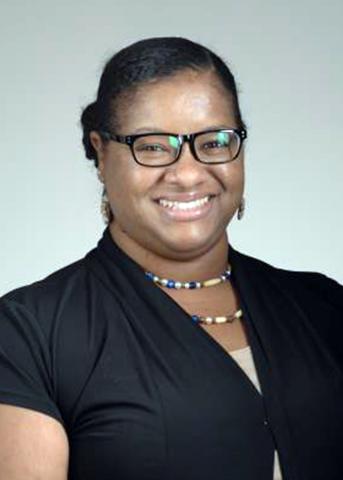
Change Agent, Tierra Robinson, born in Maryland, is a member of the Piscataway Conoy Native American Tribe and is a Physical Scientist (Environmental) in the Waste and Recovery Branch of Division of Environmental Protection (DEP). Ms. Robinson conducted research as a National Congress of American Indians (NCAI) Native Graduate Public Health Fellow and NIH National Institute of Neurological Disorders and Stroke (NINDS) Post-Baccalaureate Fellow.
Ms. Robinson is an active member of the Green Team Leads Council (GTLC) and Sustainable Lab Practices Working Group (SLPWG) in providing NIH waste management updates. She has also created updates to web content and outreach materials in efforts to increase recycling awareness. With the help of the WRRB team, Tierra implemented a new plastic film recycling pilot on the National Institutes of Health (NIH) Bethesda campus in March 2017.
How did you choose your career?
I wanted to be a planeteer, like on the tv show Captain Planet! Traditional environmental values from my family, my love for life and the environment, in addition to my hobbies (fishing, crabbing, hiking) have all culminated in my desire to be an environmental scientist.
How did you become interested in the NIH?
I met Dr. Rita Devine during a graduate public health fellowship with the National Congress of American Indians, and she did a presentation on the opportunities available for students that want to pursue research. It was a very defining moment for me.
How can you help improve the composition of the Science, Technology, Engineering, Math (STEM) education pipeline for Native American students?
I make a point in using social media to highlight the fun and amazing things I get to do during my career in hopes of capturing the attention of young people in my tribe. I have been successful, and I'm often asked how they, too, can find opportunities to put them on the path to a STEM career.
What are some ways to provide better STEM education for Native American students?
How can Tribal colleges build stronger partnerships with institutions like NIH? Tribal colleges should set up a program, or even a competition to chose at least one deserving and disadvantaged student to sponsor to come to NIH to intern. In addition, that liaison for the program needs to coordinate getting out the information about the NIH Summer Internship program.
What types of community programs do you feel need to be more visible in Indian Country?
Any programs that highlight the amazing things that Natives are doing will assist youth in visualizing themselves in similar careers. Youth need to see people like themselves, making strides in underrepresented industries and education.
What is your most important accomplishment to date?
As an intern, I researched and wrote the baseline document that is now an application that NIH's Division of Environmental Protection uses to approve chemical waste disposal in NIH laboratories. I was also selected to present my research project, Reduction of Antibiotics in Animal Waste Bedding through Thermophilic Composting, at the 2016 Society for Advancement of Chicanos/Hispanics and Native Americans in Science (SACNAS) Conference.
Can you share a mentoring success story from your career at the NIH?
Each year, I have mentored at least two students in the Native Summer Internship Program here at NIH. One has gone on to start a career at Environmental Protection Agency (EPA) as an environmental specialist. One is making their way through school with interest in the science field. My mentees have both taken my advice on networking and career advancement, while also paying it forward to the youth coming behind them.
Why is diversity important for science?
Diversity is essential to science. New ideas are how sciences have evolved since time immemorial. The introduction of various thinking from varied backgrounds is how the field improves and changes the quality of life for entire populations.
What does success mean to you?
Success is the attainment of goals while growing, learning, and enjoying the journey along the way.
What are your personal power words?
More of a phrase: I'm afraid, but I'm going to do this anyway!
Do you have a story idea for us? Do you want to submit a guest blog? If it's about equity, diversity, or inclusion, please submit to edi.stories@nih.gov.
For news, updates, and videos, follow or subscribe to EDI on: Twitter, Instagram, Blog, YouTube.







